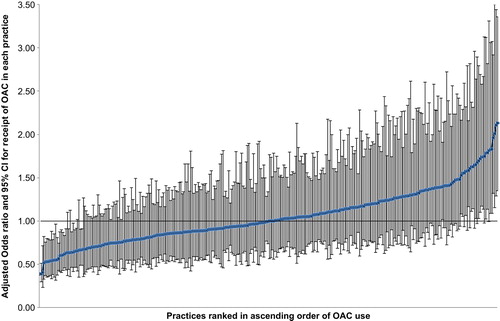Figures & data
Box 1. Points scored for stroke risk factors under CHADS2 (Citation14,Citation43) and CHA2DS2VASc (Citation43). Under both schemes, the scored points are summed, with 0 = ‘low risk’, 1 = ‘intermediate risk’ and ≥ 2 = ‘high risk’.
Table 1. Demographics of 21 096 patients with atrial fibrillation without rheumatic heart disease or valve replacement.
Table 2. Predicted risk category for 21 096 patients with atrial fibrillation without rheumatic heart disease or valve replacement.
Table 3. Current treatment and ever anticoagulation by risk stratification for 20 443 patients with atrial fibrillation without rheumatic heart disease or valve replacement, and diagnosed for at least 12 weeks.
Table 4. Patient and practice variables associated with current prescription of anticoagulation for 20 443 patients with atrial fibrillation without rheumatic heart disease or valve replacement, and diagnosed for at least 12 weeks. Univariable and adjusted odds ratios are estimated in a multilevel model to account for clustering by practice. Adjustment was by variables shown in the table.
Figure 1. Variation between practices in receipt of OAC by individual patients (odds ratio and 95% confidence intervals) after adjustment for patient characteristics. An odds ratio of 1.00 represents the average across all 315 practices.

